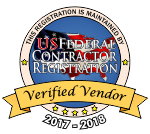|
|||||||
|
|||||||
|
energy efficiency
QA Graphics's New HTML Energy Efficiency Education Dashboard Built to Showcase an Iowa Nature Center
QA Graphics is excited to announce the creation of an HTML Energy Efficiency Education Dashboard (EEED) that will be housed at the Indian Creek Nature Center in Cedar Rapids, Iowa. September 15-18th is the grand opening weekend where an open house will be held for the Amazing Space at the Indian Creek Nature Center. A Connection Ceremony will commence at 11 am on Friday the 15.th Activities will continue all weekend with free activities open to the public such as: tours, live music, food, children activities, and more.
An Energy Efficiency Education Dashboard is one feature of this new space. The EEED is a web application that educates building occupants by showcasing real-time energy data and green building features. Highlighting sustainable efforts of a building working towards a green certification. The benefit of QA Graphic’s dashboards is that they can be displayed anywhere, a standalone kiosk or any web-enabled device. Each dashboard is customized and built to the need of each client using the customer’s branding, helping the dashboard feel cohesive with the rest of their building or website.
Indian Creek Nature Center’s dashboard contains:
- Building performance information for electricity and water usage, as well as PV production. This will show the current usage or production, as well as a chart showing historical data compared with baseline data.
- Green tips on how to save energy at home.
- Green features hotspot maps. These show where all the green features are within the building and campus site. Users can select a hotspot and see an image and description of the feature, or they can view some demo videos to learn how the features work.
- A Living Build Challenge Checklist (http://living-future.org/lbc/about). This area breaks down the different ways Indian Creek Nature Center received certification through the Living Building Challenge.
- An interactive map of attractions along the Cedar-Wapsi Recreational Byway. This map shows the 17 different education, recreation, and cultural attractions located along the Highway 13 corridor.
- An extended weather forecast for Cedar Rapids.
Energy Efficiency Education Dashboard – The EEED is a web application that educates building occupants by showcasing real-time energy data and green building features. The EEED highlights sustainable efforts made in the design and construction of a building, which may help acquire points toward LEED® certification. QA Graphics’ dashboards are used by schools, universities, businesses, healthcare facilities, and data centers. Applications can be displayed in a common area via large format kiosk displays or on any web-enabled device.
Read the release here: http://www.prweb.com/releases/2016/09/prweb13650319.htm
5 Challenges facing Facility Managers
Everyone faces challenges in their jobs and facility managers are no exception. Luckily, with each challenge there are opportunities to rise to the occasion and gain a competitive advantage while finding sustainable solutions for the long term benefit of the industry. Here are 5 of the the challenges that facility managers face every day.
1. People don’t know what facility managers do (not even their own colleagues). Facility managers focus on improving efficiency by reducing operating costs and increasing productivity. They manage and operate buildings, and ensure that the building has the most sustainable working environment for its employees and activities. Facility managers are involved in both strategic planning and day-to-day operations like procurement and contract management, maintenance, cleaning, catering and vending, health and safety, security, utilities and communications, and space management. Because their positions are so diverse it’s hard for other employees in the organization and outsiders to get a full understanding of what they do and they are often tasked with things outside of their primary duties as a result.
2. The public is very enthusiastic about energy saving, but investors lack confidence. Investors can’t see a clear picture of their return on investment due to the varied nature of energy efficiency plans. There is a need for more uniform standardization that allows investors to see how their money will be used and what kind of return they can expect.
3. Facility management needs to be better incorporated into design and construction in order to be effective. Operations and design go hand-in-hand when considering highly efficient buildings. A well managed building may never achieve top energy scores if it was not designed accordingly. Similarly, updating an old building without improving operations will have little effect on overall efficiency.
4. Risk of building data security breaches and cyber-attacks. There are thousands of entry points in and out of companies and data security is still lacking across many automation systems. The risk of breaches and cyber-attacks is a real possibility that facility managers face on a regular basis.
5. Getting occupants to buy in to energy efficiency efforts. Without 100% automation throughout a building, all the planning in the world will not stop careless employees from ignoring environmentally friendly practices, like turning off the lights when leaving a room. Technology, including automating sustainable choices can help, but strong leadership goes a long way in getting employees to respond.
Knowing the issues is half the battle. Through strong leadership, any company can overcome these challenges and help build new standards for an industry on the rise. With the advancement of smart buildings and more attention on energy efficiency, facility management is more important than ever and will continue to grow in the years to come.
QA Graphics provides design solutions for the building automation and sustainable buildings industries. Contact us today to discuss how we can advance your current system!
What is LEED?
Pay attention and you’ll probably notice LEED Certified signs on many of the public buildings you frequent. From gas stations to office buildings, more companies are choosing to follow “green” practices. Short for Leadership in Energy and Environmental Design, LEED is a credit based system that allows building projects to earn points based on environmentally friendly actions taken during construction and use of the building to satisfy prerequisites for achieving different levels of certification. The current system in place is LEED 2009, which has 100 possible points in six categories, including Sustainable Sites, Water Efficiency, Energy and Atmosphere, Materials and Resources, Indoor Environmental Quality, and Innovation in Design. Points are earned for things like access to quality transit, environmental tobacco smoke control, and light pollution reduction, to name a few. Check out a complete list of credits here.
The LEED system was developed by U.S. Green Building Council (USGBC) to help building owners and operators become more environmentally responsible and use their resources efficiently. It is a voluntary program, although many cities provide tax credits and grants for green buildings, while others may require certification for public buildings. As of October 31, 2016, any new projects registered will use LEEDv4. Under this new system there is a stronger focus on materials beyond how much is used in order to get a better understanding of what our buildings are made of and the effect those components have on human health and environment. LEEDv4 is also more performance based for indoor environmental quality, and rewards projects for participating in demand response programs.
Although, LEED standards are not mandatory for all builders, more are choosing to achieve certification due to the positive environmental image to the community. Other benefits include energy and cost savings over the life of the building structure, despite higher building costs. These buildings also command higher rental rates and are shown to have greater occupancy than non-green buildings.
Interested in LEED certification? Check out the USGBC website and contact us about how using an Energy Efficiency Education Dashboard can help you monitor resources.
Sustainability Mythbusters
We loyally read the environmental news site, Environmental Leader, here at the office. I recently came across “Sustainability Mythbusters” a series of 6 articles provided by Schneider Electric’s Global Sustainability Services team. The series explores common misconceptions related to the topic of sustainability and presents a business case to “bust” each myth. In Part III, they address the myth that it’s too expensive for businesses to be sustainable, when in reality, it’s too expensive not to make change to be more sustainable.
At a time when budgets are tight, it can be daunting to think about investing in building renovations or products for building efficiency. But that doesn’t mean there’s nothing you can do if you don’t have a large scale plan in place. You can start implementing strategies that don’t require a major investment. See if you can identify how to reduce energy, water usage or waste at the office. Implement recycling programs and energy saving initiatives. Get both management and your occupants involved so everyone is working towards a more efficient building. Everyone can make a difference if they change their direct energy usage habits, including plug load usage from phones, tablets, lamps, computers, heaters, fans etc. If done effectively this can contribute to a more efficient building and cost savings will reflect that. Use this data to evaluate and consider investing in longer term strategies. The article states that up to 30% of utility costs can be reduced if you invest in better controlling automation and optimize consumption. Continue to implement short term goals while maintaining a longer outlook for the future and follow ROI in these changes.

 QA Graphics’ award winning Energy Efficiency Education Dashboard® (EEED), educates building occupants with energy data and green building features using a kiosk or desktop, tablet, or mobile device.
QA Graphics’ award winning Energy Efficiency Education Dashboard® (EEED), educates building occupants with energy data and green building features using a kiosk or desktop, tablet, or mobile device.






